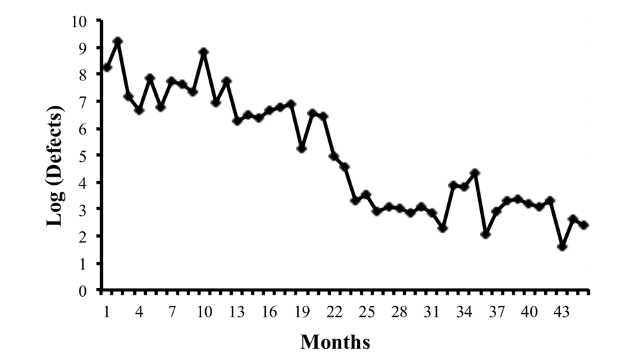
Knowledge Management and ISO 9001:2015
The inclusion of Knowledge Management within the recently released ISO 9001:2015 marks a huge change within the world of KM.
For the first time, one of the global business standards explicitly mentions knowledge as a resource, and specifies expectations for the management of that resource. This provides a long-awaited level of legitimacy for KM which could be a game-changer.
ISO 9001 is the most widely applied standard for Quality Management systems, used by organisations of all sizes and in all countries to demonstrate that they have a management system to control the quality and consistency of goods and services. Over a million ISO 9001 certificates are awarded every year.
An ISO 9001 certificate is not a once-and-for-all award, but must be renewed at regular intervals recommended by the certification body, usually once every three years. Similarly the ISO standard itself has been through many updates. In preparation for the 2015 update, ISO surveyed about 15000 people worldwide to see what was missing from the standard which needed to be included. The overwhelming answer was “you need to include the management of knowledge”.
A new clause has therefore been added to ISO 9001:2015, as follows:
Clause 7.1.6. Knowledge
Determine the knowledge necessary for the operation of its processes and to achieve conformity of products and services.
This knowledge shall be maintained and made available to the extent necessary.
When addressing changing needs and trends, the organization shall consider its current knowledge and determine how to acquire or access any necessary additional knowledge and required updates.
NOTE 1: Organizational knowledge is knowledge specific to the organization; it is generally gained by experience. It is information that is used and shared to achieve the organization’s objectives.
NOTE 2: Organizational knowledge can be based on: a) Internal Sources (e.g., intellectual property, knowledge gained from experience, lessons learned from failures and successful projects, capturing and sharing undocumented knowledge and experience; the results of improvements in processes, products and services); b) External Sources (e.g., standards, academia, conferences, gathering knowledge from customers or external providers).
As Nick Milton of Knoco Limited notes, this new clause is not a Knowledge Management standard, nor does it require an organisation to have Knowledge Management in place as a formal requirement. As a clause in a Quality standard, it simply requires that sufficient attention is paid to knowledge to ensure good and consistent quality of goods and services.
However, an organisation will need to have many Knowledge Management elements operating as part of its Quality Management system in order to comply.
The new standard offers the following commentary, which gives a little more guidance on the sort of things that an auditor might be looking for:
In 7.1.6 the international standard addresses the need to determine and manage the knowledge maintained by the organization, to ensure the operation of its processes and that it can achieve conformity of products and services. Requirements regarding organizational knowledge were introduced for the purposes of:
a) safeguarding the organization from the loss of knowledge, eg – through staff turnover – failure to capture and share information
b) encouraging the organization to acquire knowledge, eg
– learning from experience
– mentoring
– benchmarking
From the text above and in the previous section, it is clear that many of the common elements of Knowledge Management are implied or specifically mentioned. These include:
- an appropriate system for learning from experience, including the use of lesson learning
- an appropriate approach to knowledge retention, including mentoring, tacit knowledge capture, and knowledge sharing
- some form of KM audit, benchmarking and KM strategy, sufficient to identify the critical knowledge needed to deliver quality products and services, and the main knowledge gaps, and
- a system (roles, processes and supporting technology) for maintaining knowledge and making it available to the extent necessary
An organization applying for ISO 9001:2015 certification is audited based on an extensive sample of its sites, functions, products, services and processes. The auditor identifies and presents a list of problems (defined as “non-conformities”, “observations”, or “opportunities for improvement”) to management. We do not yet know how clause 7.1.6 will be audited, but, according to Knoco Limited, the text of the ISO standard document suggests that the auditors may be looking for evidence that your organisation has:
- completed a knowledge scan of key knowledge topics and created a list of critical knowledge topics
- assigned a topic owner to each critical knowledge topic and created an appropriate maintenance procedure
- an effective way to find the knowledge, such as a good knowledge base and search engine and/or appropriate processes and systems to “push” knowledge to those who need it
- a strategic knowledge plan with identified actions to fill knowledge gaps from external sources
- an effective system for learning from experience, including embedded roles, consistent lesson capture processes, a lessons management system, good governance, incorporating process, product and service improvements, and
- a knowledge retention and transfer program
Although clause 7.1.6 deals specifically with knowledge, there are other clauses which knowledge management may impact or support. For example, clause 7.2 deals with organizational competence, requiring the organization to ensure staff have the necessary competence to perform their role.
Organisations will need to review their knowledge management strategy and see whether it is adequately designed to support the acquisition of new knowledge that will be required to underpin future competence requirements.
Clause 7.5 is about documented information, and the ways in which the information necessary for the effectiveness of the Quality system is managed. This includes how the information is created, stored, controlled, distributed, accessed, used, retained and disposed. As Nick Milton points out, the ISO authors are therefore clear about the distinction between information and knowledge, and the two are treated in separate clauses.
Knoco Limited point out that the new requirements under ISO9001:2015 make a massive change to the way that Knowledge Management can be presented to your senior managers. Instead of selling KM within an organisation as “a good thing to do” it can be presented it as “a requirement for ISO certification in the area of Quality”.
Note however that others may not see this new clause as being as significant as people who understand Knowledge Management better. Staff may underestimate the significance of the knowledge clause, perhaps assuming that learning from experience and knowledge retention are simple matters. You will need to make your organisation aware of any impact clause 7.1.6 may have on their ISO 9001:2015 qualification, and to be clear on the actions that need to be taken to ensure compliance.
Additional information on preparing for KM compliance as part of ISO 9001:2015 can be found in the latest Knoco newsletter.
Editor’s note: See also How to meet the requirements of ISO 9001:2015 Clause 7.1.6 Organisational knowledge.





In KMi-evolution -Integral Knowledge Management we join Social Knowledge Management to traditional Organizational Knowledge Management, reinforcing the importance of Knowledge Management to support strategic and quality processes. You can appreciate our post on http://cesoftco.net/en/iso-9001-2015-la-gestion-del-conocimiento/